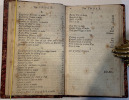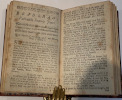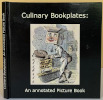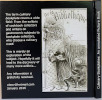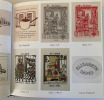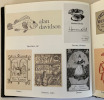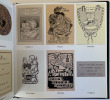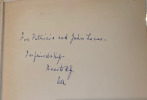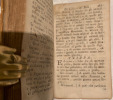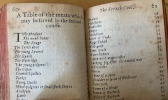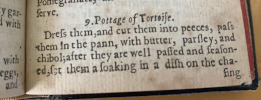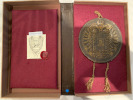E. NIGNON ELOGES DE LA CUISINE FRANCAISE
PRESENTATION DE SACHA GUITRY (A small illustration of game, fish, casserole and wine bottle) PARIS L'EDITION D'ART H. PIAZZA 19, RUE BONAPARTE. With an elaborate ornate illustrated blue/green border.
FIRST EDITION 1933. 241 x7. 3feps. Original Cover. 1fep. Author's signature and dedication; 'Hommages respectueux de P. Cluteur a Madame Mourry qui sait si lieu apprecier L'art gastronomique E. Nignon. Paris le 7 Novembre 1933.' [1] Half Title. [1] Title page. [1] p1 & 2 Presentation by Sacha Guitry. Dedication page to Robert de Flers. [1] 1p with large illustration in blue/green. [1] 11-426. 427-441- Index Alphabetique. [1]443-444 Index. Many beautiful illustrations though-out. 1p Ouverges de Meme Auteur. [1] 2 original feps. Original back cover. First three pages (signed and presentation) foxed. Text block in fine clean condition with many fine illustrations. Everything as originally issued and clearly legible. The whole original book bound into a quarter burgundy leather binding and burgundy marbled boards. The spine with raised bands and gilt text. In wonderful condition.
- From the 'fnac' website online in an interesting article translated from French, we see how they express a panegyric to one of their own. Edouard Nignon (1865 - 1934), cook of Kings, the Tsar and celebrities of his time. Everyone recognizes in him one of the great masters of the French kitchen. Written by Édouard Nignon and published in 1933, this book 'Eloges de la Cuisine Francaise', presents all aspects of French cuisine, from menus to recipes, all sprinkled with the author's tasty anecdotes. Divided into three parts, the book proposes to discover traditional recipes of French cuisine and classified by theme and culinary precepts. The second part lays the foundations of the essential and basic know-how in the kitchen: soups, sauces, ice creams, spices, marinades. Lastly, come the "formulas" (a term preferred to that of "recipes"), extracted from lunches and dinners that took place during the year 1876. A description of these meals is recounted by Nignon, a testimony that instantly immerses us in the atmosphere of the time. Édouard Nignon trained very early in prestigious Parisian restaurants and, at the age of 27, even organized the dinners of Emperor Franz Joseph in Vienna. His career then took place abroad: Claridges Hotel in London, the Hermitage in Moscow, the banquets of a thousand covers for Tsar Nicholas II in the Kremlin. In 1908, he returned to France to fulfil his dream by becoming the owner of the famous restaurant Larue, which he ran for more than 13 years. One menu from the book at the Champs Elysees on the 31 December 1876 starts with / Oysters and Caviar with blinis by Smolensk. POTAGES / Crème Nerval Consumed Leczinska Friandises: Dauphines de Volaille, Palermitains. POISSONS / Trout Salmon at the Villars. / Lobster Tails Villemain. ENTREES / National Poularde Countess. Rosette d'Agneau de Bordeaux. Supreme of Woodcocks and their Essence. ROTS / Royal chilled Foie Gras Surprise Salad Gauloise. Legumes / Collection of Artichokes Soufflés. ENTREMETS / Madeleine of Pineapple Palphis Sultane with Punch Fruits. VINS / Chablis-Moutonnes 1842 / Château-Margaux 1855 / Musigny 1848 / Champagne.
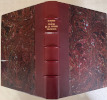
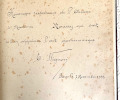



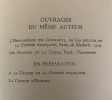
click on image to enlarge

Modern category
ref number:
11332 

